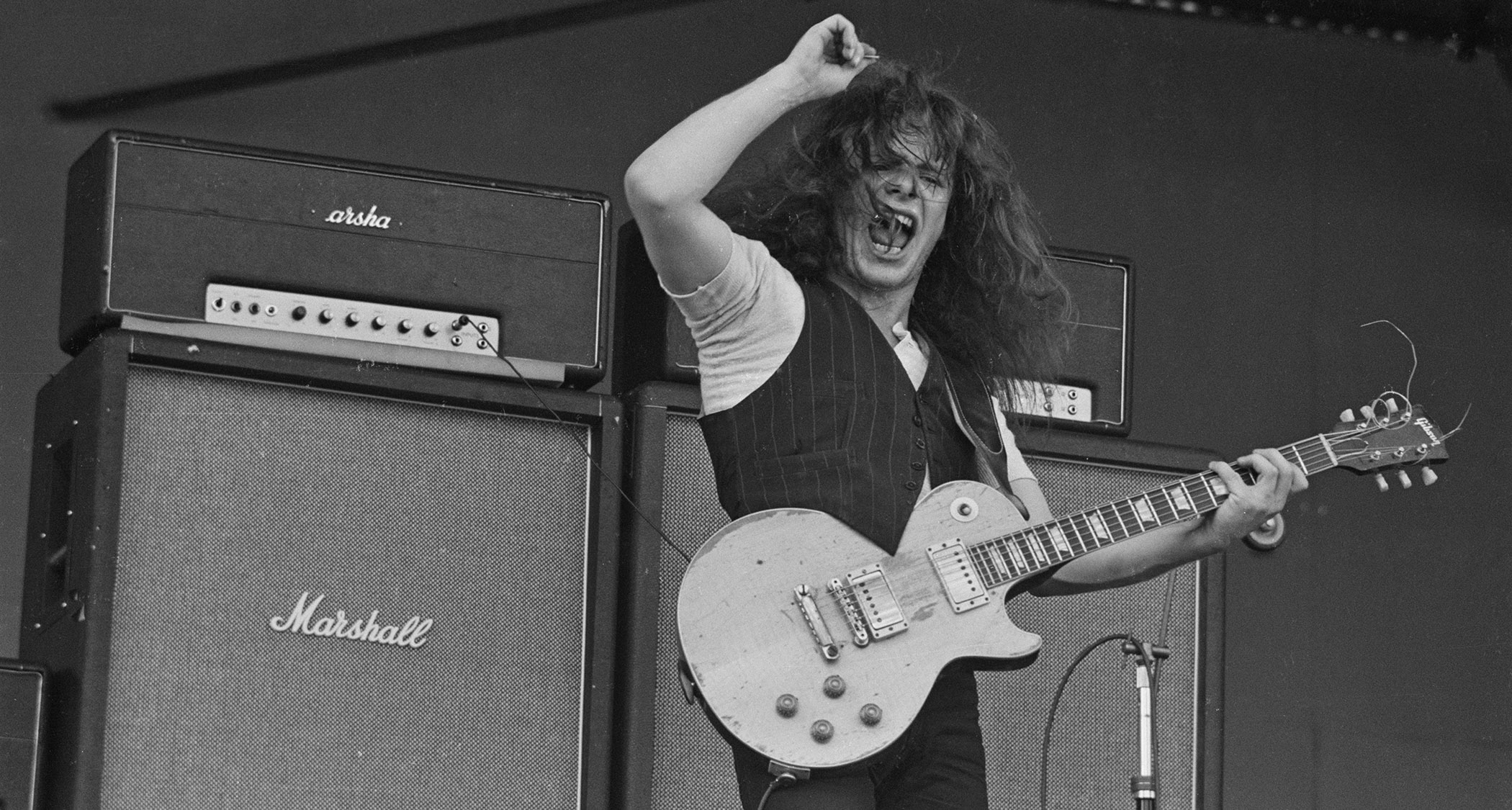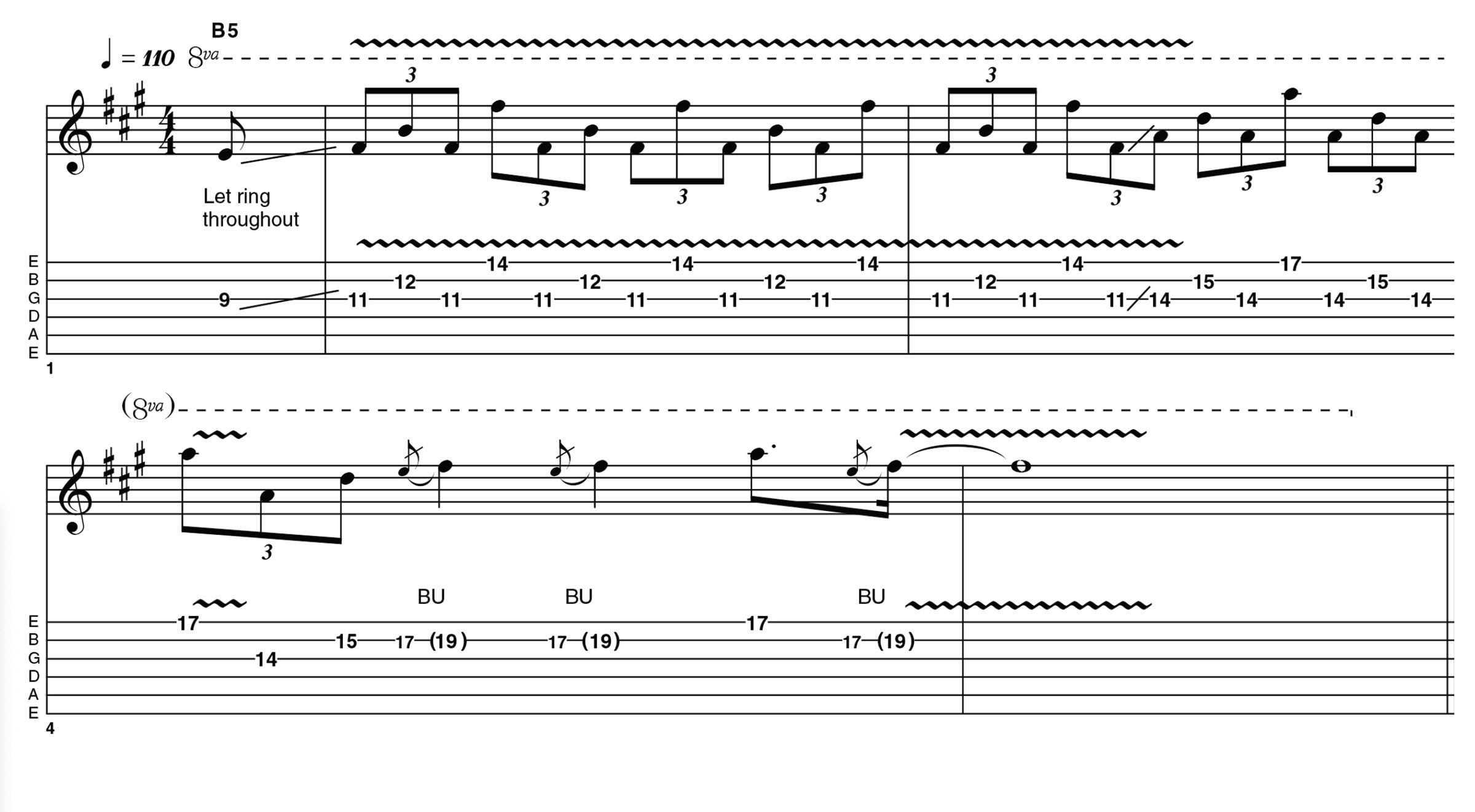His playing had an intensity and drama that even Eric Clapton admired – and it all started with classical guitar: Paul Kossoff was a rare genius with a vibrato to die for
It was Clapton's work with John Mayall that electrified the Free guitarist's imagination. Then it was Marshall stacks, a Les Paul and a wicked vibrato…

Paul Kossoff’s story is regrettably short, but it’s packed with classic songs and great guitar playing. Starting out on classical guitar, Paul gravitated to electric after seeing Eric Clapton with John Mayall’s Bluesbreakers as a teenager.
It’s clear from his earliest recordings with London-based act Black Cat Bones in 1967 to his final recordings with Back Street Crawler in 1975 that ‘Koss’ was intensely passionate about music, regarding the guitar as his voice, rather than a vehicle for showboating.
Paul’s best-known work was as a member of Free, and that’s what I’m primarily referring to with this lesson. They were devised and recorded separately, with the intention that they could be joined together later to form one ‘take’ (and the beginning of another).
By combining some notable characteristics of Paul’s playing such as his approach to pentatonics, bends, doublestops, chord fragments – and, of course, that virtually impossible to imitate vibrato – the intention is to gain further insight into his style and capture some of the intensity and drama that his peers (including Eric Clapton) admired.
Though Paul experimented with layering different guitars and tones (check out The Stealer above), and occasionally used effects such as wah and a Leslie rotary speaker, he’s probably most associated with plugging straight into a Marshall head (typically a 100-watt Super Lead).
It is known that Paul liked to use Marshall bass speakers, feeling they had a rounder sound, but there’s no getting away from the well-worn ‘tone is in the fingers’ adage here.
I found that reducing the bass and cranking the mids on the studio’s JTM45 Mk II reissue helped focus the tone, as did linking the inputs and using a higher level on the High Treble volume – no master volumes in those days!
Example 1

In this first example, I’m combining fretted notes and open strings in a way that Paul did in his famous All Right Now solo.
There is fairly fast vibrato applied throughout, and this phrase moves into B minor pentatonic (shape 1) towards the end. Note that the final bend is raised to F# before the note is played.
Also, the vibrato emphasises lowering the pitch below and coming back to F#, rather than the ‘above and below’ vibrato Paul also used.
Example 2

Changing to E minor pentatonic (shape 1) as the backing chord changes to E, we find a more rhythmic approach, certainly by bar 2, where the repeated bends and releases are most emphasised.
Unlike Example 1, the vibrato on the final bend clearly goes above and below the targeted pitch of B. There is (albeit briefly) also some intentional ‘bleed’ between the penultimate bend and the D at the 15th fret of the second string.
Example 3

Building higher, this example continues the combination of bends, doublestops, vibrato and letting notes ring together. The final note dies short fairly quickly, but this allows the turnaround in the backing track to take centre stage, much in the way Paul himself might have done.
I’m keeping the vibrato as intense as I can here. Paul worked very hard on this technique and apparently favoured heavier strings and picks than many of his contemporaries, probably to maximise tone and sustain.
Example 4

This final phrase occurs as the backing track starts another round, and is based on some of the ideas that appear in Paul’s epic solo on Mr Big.
Playing in a trio meant there could often be holes to fill (even with the great Andy Fraser on bass!), and Paul took an interesting approach to both solos and chords on many occasions to fill out the sound with unusual voicings. You’ll hear this on Fire and Water and even the classic All Right Now.
Hear it here
Free – Tons of Sobs
Free’s first album was recorded in 1968, only a couple of years after Paul’s switch from classical to electric. Actually, his classical guitar makes a brief appearance on Over The Green Hills (Pt 1) before segueing into Worry, with his electric playing already a distinctive voice. Innovative use of controlled feedback and unison riffing with the bass introduce Walk In My Shadow with further solo highlights.
Another standout track is I’m A Mover, which sounds very ‘live’ with the guitar solos providing lots of excitement.
Free – Fire and Water
To many, this is probably the definitive Free album, containing some of their finest moments, including the single All Right Now. However, there is much to be gained from checking out the title track, which contains some interesting chord voicings and fabulous soloing.
Also check out Oh I Wept for more examples of this, plus a reminder that Free were influenced as much by soul as by blues and rock. Finally, have a listen to Mr Big to hear Paul’s minimalist rhythm playing and epic soloing.
Back Street Crawler – The Band Plays On
Though addiction caused turbulence in Paul’s career, he was still making music till the end. This 1975 album opens with strident playing on Hoo Doo Woman, with Hendrix-inspired rhythms, and the title track showcases Paul’s expressive vibrato and bends.
It’s A Long Way Down To The Top is reminiscent of Free’s laid-back soul, with a more stripped-back arrangement – maximising the impact of the solo! There are clearly stylistic nods to the era, but parts wouldn’t sound out of place on a Free LP.
Get The Pick Newsletter
All the latest guitar news, interviews, lessons, reviews, deals and more, direct to your inbox!
As well as a longtime contributor to Guitarist and Guitar Techniques, Richard is Tony Hadley’s longstanding guitarist, and has worked with everyone from Roger Daltrey to Ronan Keating.
“There are so many sounds to be discovered when you get away from using a pick”: Jared James Nichols shows you how to add “snap, crackle and pop” to your playing with banjo rolls and string snaps
How to find new approaches to blues soloing – using fingerstyle improv ideas and Roy Buchanan-inspired licks











